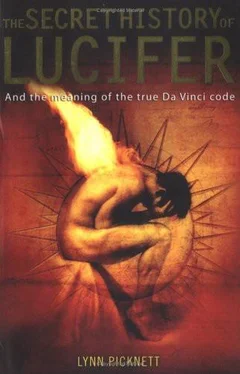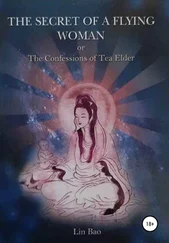A major problem in assessing the truth about the heresy is that few records survive other than the accounts of their enemies, but dedicated researchers have been able to piece together beliefs that would certainly not have won the Cathars many favours with orthodoxy. As Yuri Stoyanov notes in his classic The Hidden Tradition in Europe (1994):
In the Catholic records descriptions appear of `Luciferan' sects in whose belief the traditional ... Cathar dualism of the evil demiurge of the material world and the transcendent good God appeared in reversed form, and where Lucifer was revered and expected to be restored to heaven, while Michael and the archangels would duly be deposed to hell."
However, Stoyanov is careful to add, `Whether such dualism "of the left hand really existed as a derivation from decadent forms of Catharism or was formulated in the inquisitorial imagination is still being debated."'" And, of course, Lucifer equates with Satan here.
One researcher to whom there was no debate - and a very different undestanding of `Lucifer' - was the mysterious Otto Rahn, who became obsessed with the last Cathar stronghold of Montsegur, in the foothills of the Pyrenees, where approximately 200 Perfecti met a fiery death in 1244 after holding out against the Crusaders for ten months. Rahn spent many months in the 1950s combing the area for clues that might link the Cathars with the Holy Grail, making friends with the locals - although certainly not impressing all of them14 - and perhaps crow-barring in the facts to fit his own hypotheses.'s
In his 1937 book Lucifer's Court16 Rahn argues that what are seen as interrelated groups - Cathars, Knights Templar," the Troubadour movement and so on - were all part of a Gnostic religion centred on Lucifer, also known to them as `Lucibel', or his European equivalent such as Apollo, the solar deity. Rahn also linked the medieval blossoming of `Lucifer's Court' to Nordic myths, attempting to create a religion derived from European, rather than Middle Eastern, roots.'R In Rahn's hypothesis, what links all these groups together is the Holy Grail, since it has been associated separately with both the Cathars and the Knights Templar.
Rahn's university thesis was on the subject of the thirteenthcentury poet, Wolfram von Eschenbach, author of Parzival. Although the major German poet of the Grail romances, he claimed he used sources from southern Europe - the Languedoc and Spain. His Grail is not a recognizably Christian symbol, such as a great chalice filled with Christ's blood as in later tales, but a stone linked, if not with Lucifer directly, then at least with fallen angels, although Wolfram himself is not explicit on this point.
In search of the Grail
In the early 1930s Rahn became friendly with Maurice Magre,19 a member of the mysterious secret society, the Fraternity of the Polaires, an occult group keen to be associated with an ancient Nordic tradition. They claimed to be in contact with unknown `masters' in Agartha, `the invisible initiatory centre',20 but Magre was to resign from the group dramatically. Some believe Rahn was a Polaire, which may have been the case as, initially, he heroworshipped Magre, who originally urged him to carry out extensive research `on the ground' in the Languedoc, rather than burying his head in the Bibliotheque Nationale.
Magre introduced his German friend to many local people, one of whom, Arthur Cassou -'an old Ariege sage"' - told him the legend of the aristocratic Cathar heroine Esclarmonde, claiming that she had hidden the Grail in some safe location before the fall of Montsegur.
Rahn believed that Eschenbach was inspired to write his Grail romance by the Cathar story, citing the similarities between his hero Parzival, whose name means `pierce well' and the heroic Viscount of Carcassonne, Trencavel - `cut well'. Other characters were matched with real people from that time and place, including the Fisher King Anfortas22 with Ramon-Roger de Foix. And of course what else could the fictitious `Montsalvage' ('Mount Haven' or `secure mountain') be other than Montsegur? Moreover, Montsalvage is protected by a `Fountain Salvage', which Rahn linked to the fountain of Fontesorbes, while the forest surrounding Montsalvage, `Briciljan' in the tale, must be the wood known as Priscillien. Rahn noted triumphantly: `Yes: only the Cathar fortress of Montsegur, in the Ariegois Pyrenees, could have been the inviolable temple of the Grail.'23
To Rahn, the Grail was one of several stone tablets inscribed with runic writing, although he elaborated `The Grail is triple: it is a book of knowledge, a symbolic cup containing that knowledge and a stone ...' He believed it was a green stone, similar to the legendary emerald stone of the Hermetic master Hermes Trismegistus on which the greatest occult secrets are engraved. Rahn saw it as an emerald of 144 facets (twelve times twelve, the number of perfection), or 144 smaller stones inscribed in emerald. This stone had fallen from Lucifer's crown when he fell to earth - onto Montsegur.
As Arnaud d'Apremont writes in the Introduction to the French edition of Lucifer's Court:
Now, if for common mortals, Lucifer is synonymous with the devil, with Satan, it was not the same for Rahn. For the latter, Lucifer was Lucibel, the light bearer, Abellio, Belenos, Baldur, Apollo . . . A highly pure and luminous figure. Rahn . . . wanted to see himself recognized as a 'Light-bearer', a Lucifer .14
He adds: `There is nothing there that couldn't be written by Rahn the Cathar or Rahn the pagan.' Rahn himself claimed that as the stone that fell from Lucifer's diadem, the Church claimed it, `in order to christianize it'.25 The stone is believed to bestow nearimmortality: perhaps the literal-minded Rahn was seeking it as a gift for his Fiihrer - in which case we must be very grateful for the fact that apparently he failed to find it.
Rahn believed that:
the Old and New Testaments, even if they speak of different `anti-gods', have a single and unique knowledge. The Old Testament curses the `fair star of the morning'; the New Testament reveals to us in the [apocryphal] Apocalypse of John, that a certain `king and angel of the abyss' bears `in Greek the name of Apollyon'.
He explains: `Apollyon, angel of the abyss and prince of this world, is the luminous Apollo.' He links the two by citing the fact that the Greek for morning star is Phosphorus (or `Light-bearer'), which `passed for the faithful companion, the announcer and representative of Apollo, seemingly the sun,26 the greatest light bearer, and that Apollo himself was confused with the fair "Star of the Morning", the sun.' Of course the Church would consider an ancient solar god to be synonymous with Satan in any case.
Rahn believed that the crusade against the Cathars represented the war between `the Cross and the Grail', and that the Perfecti held the power of Lucifer in the form of the green stone. This is presumably the product of an over-heated romantic imagination, but there is reason to believe that the Cathars did possess a `Grail', although it may have been neither a stone nor a cup .. .
An unholy Grail
What is (or was) the Holy Grail, according to the medieval accounts? The earliest of the stories is Chretien de Troyes' unfinished Perceval (or Le conte del Graal), written in the 1180s, but whether he died or simply gave up with it is not known. It concerns a grail (or graal), introduced in this scene: `Two more youths appeared carrying candelabras followed by a fair maiden who held a bejewelled, golden grail in both her hands.' It only becomes the Grail as the story develops, and the only significance of the definite article is that it is this particular Grail that is at the centre of events. And neither is it a holy grail: although the story is set against a Christian background (how could it be otherwise?), Chretien's graal is given no religious significance, and certainly makes no connection with Jesus. It is simply an object with magical properties.
Читать дальше












